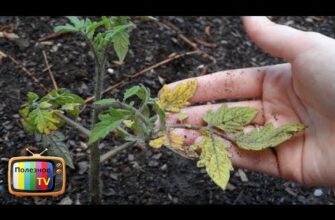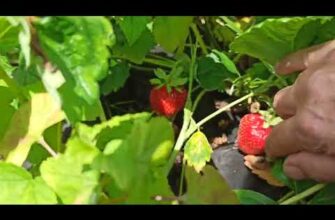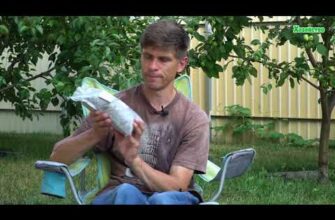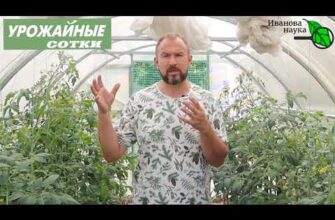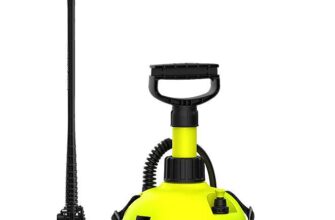- Обязательная подкормка томатов перед высадкой в грунт
- Почему нужна подкормка томатов перед высадкой в грунт
- Выбор подходящего удобрения для подкормки томатов
- Как и когда подкормить томаты перед высадкой в грунт
- Подкормка томатов для стимуляции роста
- Подкормка томатов для укрепления корневой системы
- Подкормка томатов для повышения урожайности
- Особенности подкормки томатов в открытом грунте
- Подкормка томатов в теплице и на грунтовых грядках
- Преимущества использования органических удобрений
- Правила безопасности при подкормке томатов
- Выводы
- Вопрос-ответ:
- Какую подкормку рекомендуется использовать перед высадкой томатов в грунт?
- В каком количестве следует применять подкормку перед высадкой томатов в грунт?
- Какие преимущества имеет подкормка томатов перед высадкой в грунт?
- Какие недостатки может иметь неправильная подкормка томатов перед высадкой в грунт?
- Какие существуют альтернативные методы подкормки томатов перед высадкой в грунт?
- Видео:
- Высадка томатов в открытый грунт — все тонкости от схемы посадки до заправки лунки.
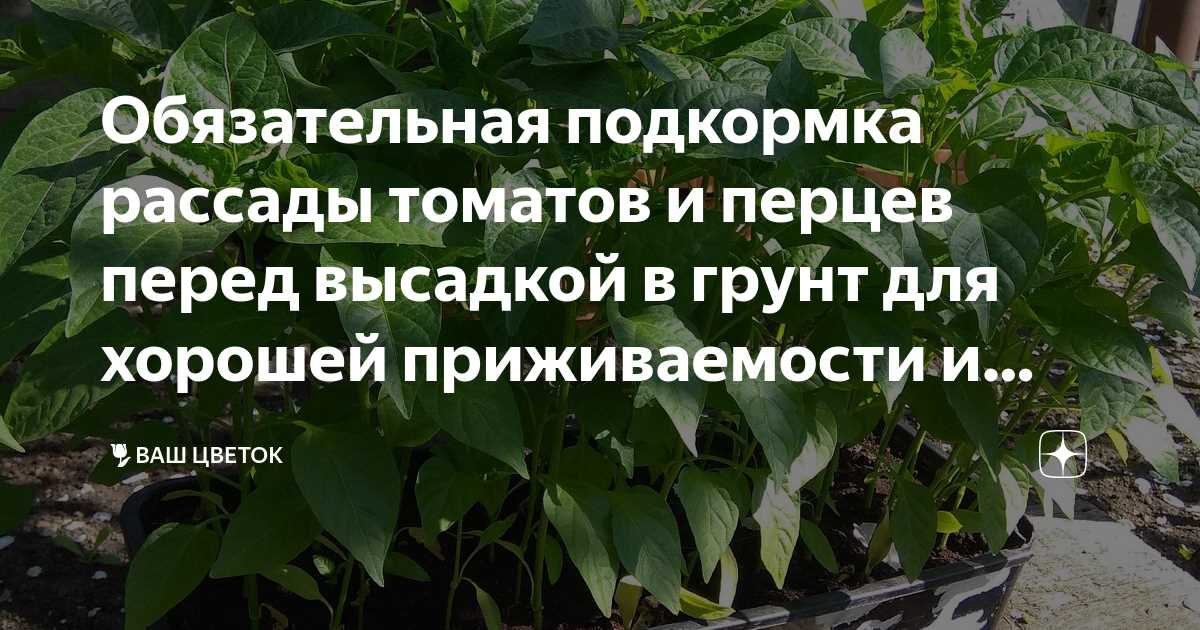
Почему обязательная подкормка томатов перед высадкой в грунт является неотъемлемым этапом возделывания этих растений? Ответ прост: без подкормки томаты не смогут получить все необходимые для полноценного развития и роста питательные вещества из почвы. В результате, они могут стать непривлекательными и неурожайными.
Высаживая томаты в грунт, важно помнить, что они требуют высокую концентрацию питательных веществ, таких как азот, фосфор и калий. Эти элементы играют ключевую роль в образовании зеленой массы, развитии корневой системы и формировании цветочных бутонов. Кроме того, томаты нуждаются в микроэлементах, таких как железо, марганец, цинк, которые помогают им эффективно использовать доступные ресурсы и усваивать питательные вещества.
Подкормка томатов перед высадкой в грунт – это необходимая процедура, которая обеспечивает растения всеми необходимыми питательными веществами и создает благоприятные условия для их роста и развития.
Для подкормки томатов можно использовать различные органические и минеральные удобрения. Органические удобрения, такие как перегной, компост или птичий помет, обогащают почву органическим веществом и предоставляют томатам необходимые питательные вещества на протяжении всего сезона. Минеральные удобрения, такие как аммиачная селитра, калийная соль и фосфорные удобрения, обеспечивают быстрый и эффективный прирост зеленой массы и формирование цветочных бутонов.
Подкормка томатов перед высадкой в грунт является одной из важнейших операций возделывания этих растений. Она обеспечивает томатам необходимые питательные вещества для полноценного развития и роста, что в конечном итоге приводит к урожайному и качественному урожаю.
Обязательная подкормка томатов перед высадкой в грунт

Подкормка является обязательной процедурой перед высадкой томатов в грунт. Она позволяет обеспечить растения необходимыми питательными веществами для успешного роста и развития.
Грунт, в который будут высаживаться томаты, должен быть предварительно подготовлен и обогащен органическими и минеральными удобрениями. Такая подготовка позволяет создать оптимальные условия для развития корневой системы растений.
Перед высадкой томатов в грунт, следует провести подкормку растений. Для этого рекомендуется использовать специальные удобрения, содержащие азот, фосфор и калий — основные питательные вещества, необходимые для роста и формирования плодов.
Без обязательной подкормки томаты могут не получить достаточное количество питательных веществ из почвы, что приведет к замедленному росту, слабому иммунитету и низкому урожаю. Правильно проведенная подкормка обеспечивает растениями все необходимое для их здорового развития и урожайного плодоношения.
Почему нужна подкормка томатов перед высадкой в грунт
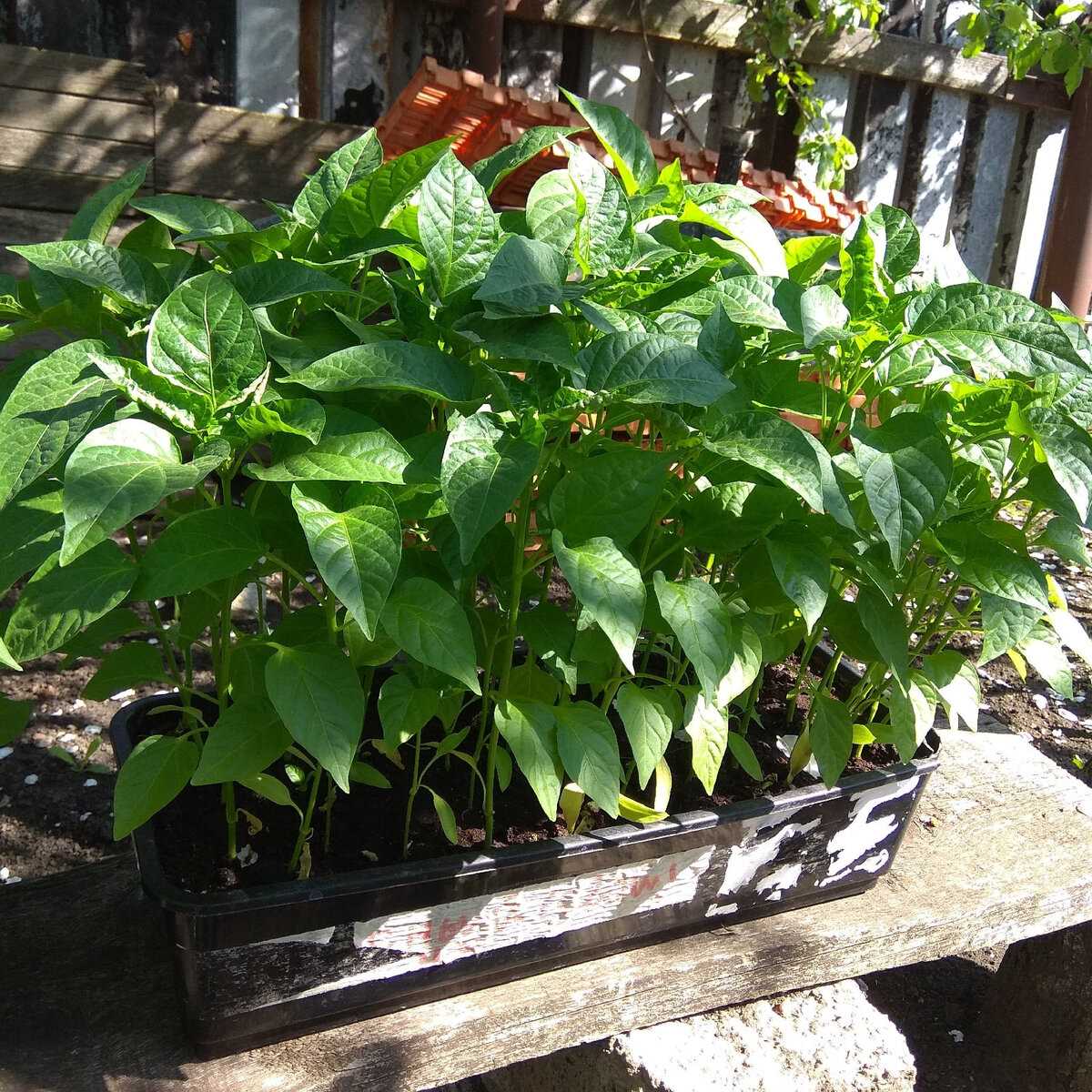
Подкормка томатов перед высадкой в грунт является обязательной процедурой, которая необходима для обеспечения успешного роста и развития растений.
Без подкормки томаты могут не получить достаточного количества необходимых им питательных веществ, что может привести к их замедленному росту и развитию.
Подкормка томатов перед высадкой в грунт позволяет обеспечить растения необходимыми микроэлементами, которые улучшают их иммунитет и способность к сопротивлению болезням и вредителям.
Высаживая томаты в грунт после подкормки, можно быть уверенным, что растения будут иметь достаточное количество питательных веществ для активного роста и формирования качественного урожая.
Выбор подходящего удобрения для подкормки томатов
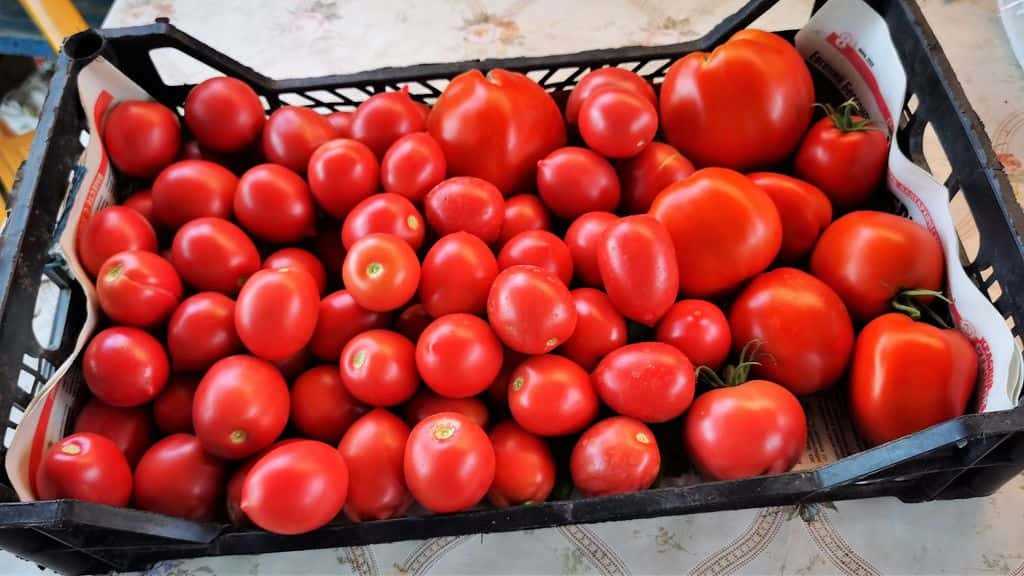
Обязательная подкормка томатов перед высадкой в грунт – важный этап, который необходимо учесть для успешного роста и высокого урожая. Почему так важно выбрать подходящее удобрение?
Перед высадкой томатов в грунт необходимо обеспечить почву всеми необходимыми питательными веществами. Подкормка томатов позволяет обогатить почву и обеспечить растения всеми необходимыми элементами. Однако, без правильного выбора удобрения, подкормка может быть неэффективной или даже вредной для растений.
Важно выбрать удобрение, которое содержит все необходимые элементы для роста и развития томатов. Оптимальным вариантом будет комплексное удобрение, содержащее азот, фосфор, калий, а также микроэлементы, такие как железо, медь, цинк и другие. Комплексное удобрение обеспечит растения всеми необходимыми питательными веществами для здорового роста и развития.
Для выбора подходящего удобрения также необходимо учитывать особенности почвы и условия выращивания. Например, если почва уже содержит достаточное количество азота, необходимо выбирать удобрение с более высоким содержанием фосфора и калия. Если почва имеет низкую кислотность, можно использовать удобрения с добавлением кальция или магния.
Как и когда подкормить томаты перед высадкой в грунт
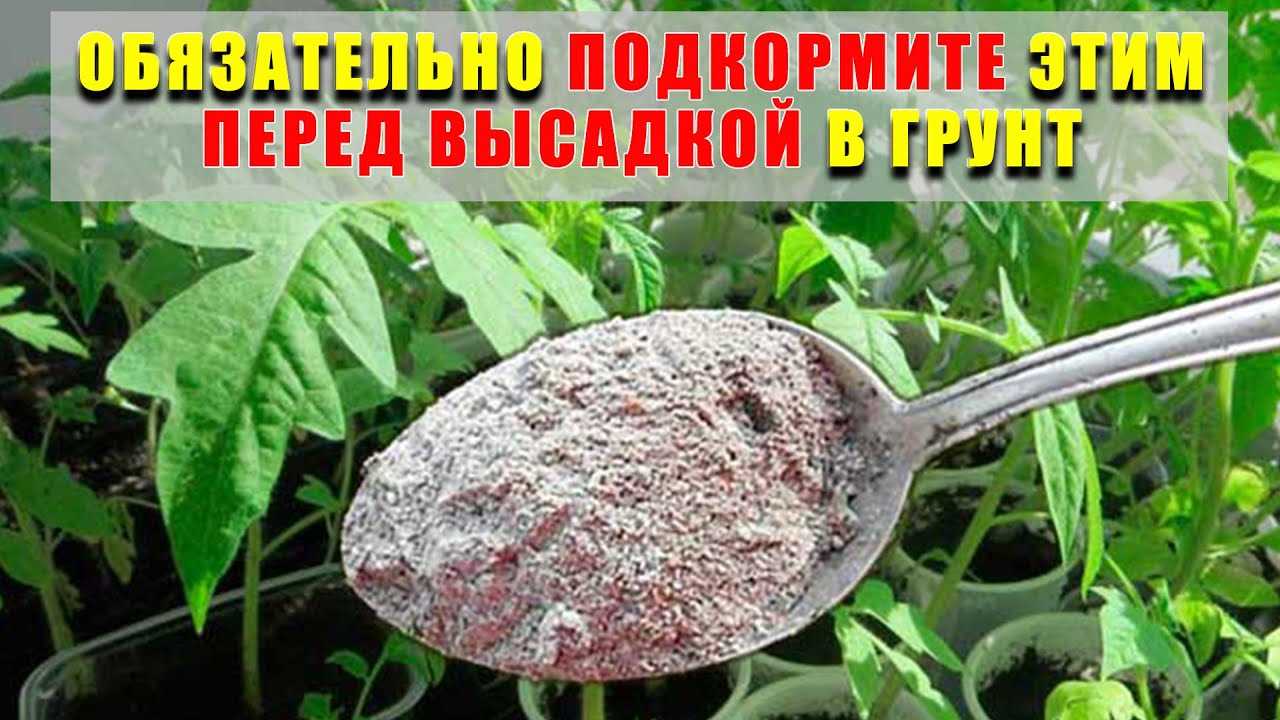
Обязательная подкормка томатов перед высадкой в грунт – важный этап, который определит успешный рост и урожай. Почему подкормка необходима? Она обеспечивает растения необходимыми питательными веществами, которых может не хватать в почве, и способствует их активному развитию.
Перед высадкой томатов в грунт подкормку рекомендуется провести за несколько недель до этого процесса. Таким образом, растения получат достаточное количество питательных веществ и будут готовы к активному росту после высадки.
Подкормку можно провести различными способами. Например, можно использовать органические удобрения, такие как перегной или компост. Они содержат много полезных веществ, которые способствуют развитию корневой системы и укреплению растений.
Также можно использовать минеральные удобрения, которые содержат необходимые макро- и микроэлементы. Например, азот способствует росту зеленой массы, фосфор – развитию корней, калий – формированию плодов.
Без подкормки томаты могут не получить все необходимые питательные вещества и развиваться медленно. Поэтому, проведите подкормку перед высадкой в грунт, чтобы обеспечить растения оптимальными условиями для роста и развития.
Подкормка томатов для стимуляции роста
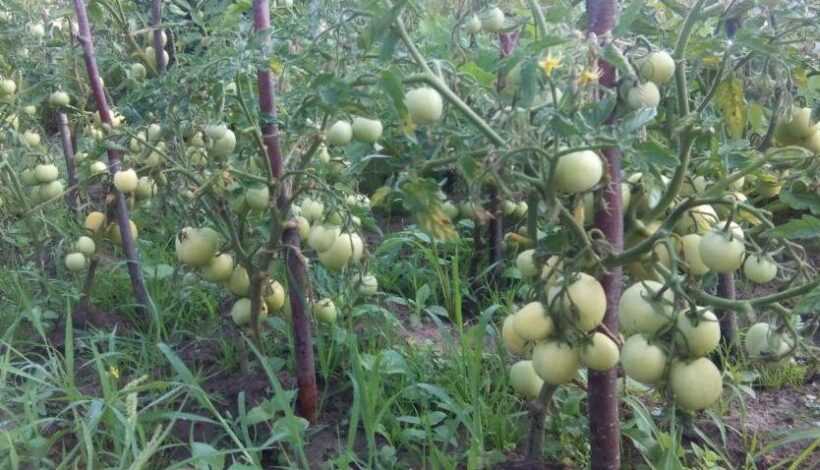
Обязательная подкормка томатов перед высадкой в грунт – один из важных аспектов успешного выращивания этого овощного кустарника. Почему? Потому что томаты являются растениями, которые требуют большого количества питательных веществ для своего полноценного развития.
Перед высадкой томатов в грунт необходимо провести подкормку, чтобы обеспечить растения все необходимыми элементами питания. Ведь если почва будет бедной и недостаточно плодородной, то томаты не смогут развиться в полноценные плоды.
Важно помнить, что подкормка томатов должна проводиться в определенные промежутки времени, чтобы растения все время получали необходимое питание. Регулярная подкормка стимулирует рост томатов, улучшает их иммунитет и способствует развитию крепких, здоровых растений.
Одним из важных аспектов подкормки томатов является выбор удобрений. Лучше использовать органические удобрения, которые содержат не только основные макро- и микроэлементы, но и полезные бактерии и грибы. Органические удобрения помогут улучшить структуру почвы и повысить ее плодородность.
Таким образом, обязательная подкормка томатов перед высадкой в грунт является неотъемлемой частью процесса выращивания этих овощей. Она позволяет обеспечить растения необходимыми питательными веществами, стимулирует их рост и развитие, а также повышает урожайность и качество плодов.
Подкормка томатов для укрепления корневой системы
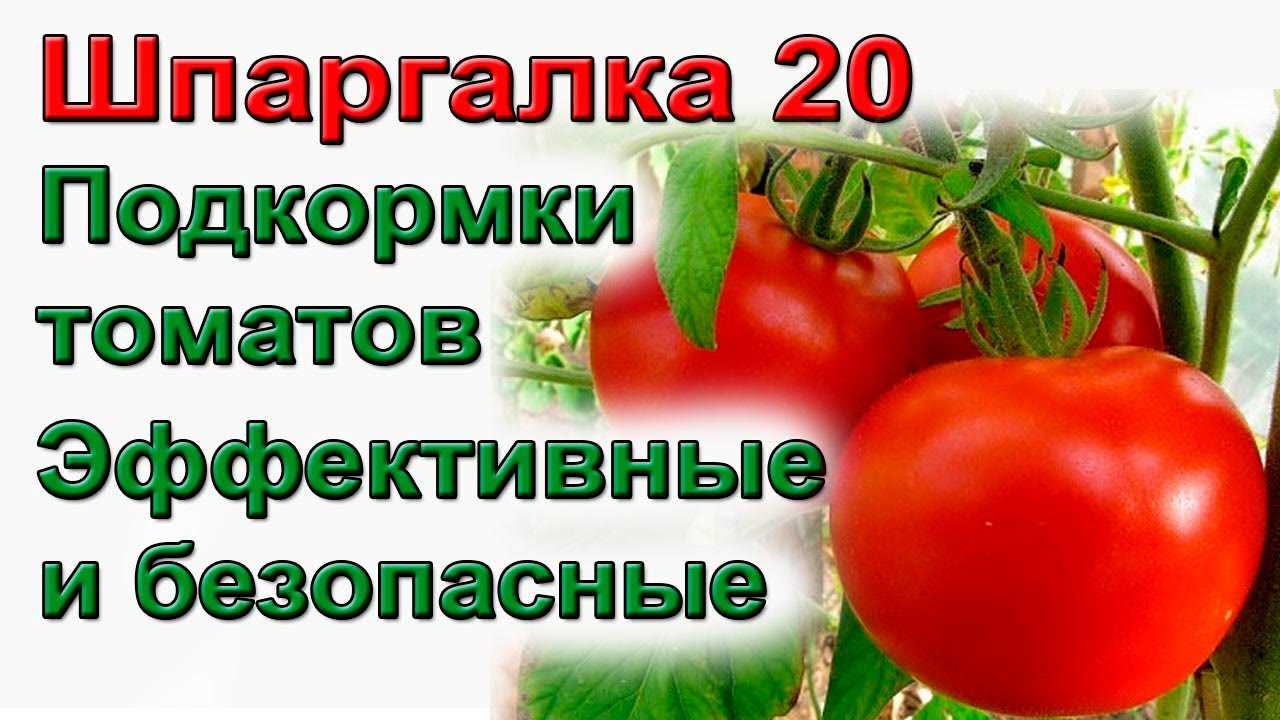
Подкормка томатов перед высадкой в грунт является обязательной процедурой для успешного роста и развития растений. Она позволяет укрепить корневую систему растений, что способствует лучшему поглощению питательных веществ из почвы.
Почему подкормка томатов перед высадкой в грунт необходима? Во-первых, томаты являются культурой, которая требует большого количества питательных веществ для нормального развития. Без дополнительного питания растения могут страдать от недостатка необходимых элементов и не смогут достичь своего полного потенциала.
Во-вторых, корневая система томатов является ключевым фактором для успешного роста и урожая. Укрепление корней с помощью подкормки способствует их лучшему развитию и улучшает поглощение влаги и питательных веществ из почвы.
Для подкормки томатов перед высадкой в грунт можно использовать различные удобрения, такие как органические и минеральные. Органические удобрения, такие как компост или перегной, обогащают почву органическим веществами и способствуют ее плодородию. Минеральные удобрения содержат необходимые для растений макро- и микроэлементы, которые они могут получить непосредственно из почвы.
Рекомендуется проводить подкормку томатов перед высадкой в грунт, чтобы обеспечить растения всеми необходимыми питательными веществами и укрепить их корневую систему. Это позволит получить более крепкие и здоровые растения, которые дадут более обильный урожай.
Так стоп!!! Вы всё ещё не подписаны на наши каналы в Телеграмм и Дзен? Посмотрите: ТГ - (@historyfantasydetectivechat) и Дзен (https://dzen.ru/myshortsstorys)
Подкормка томатов для повышения урожайности
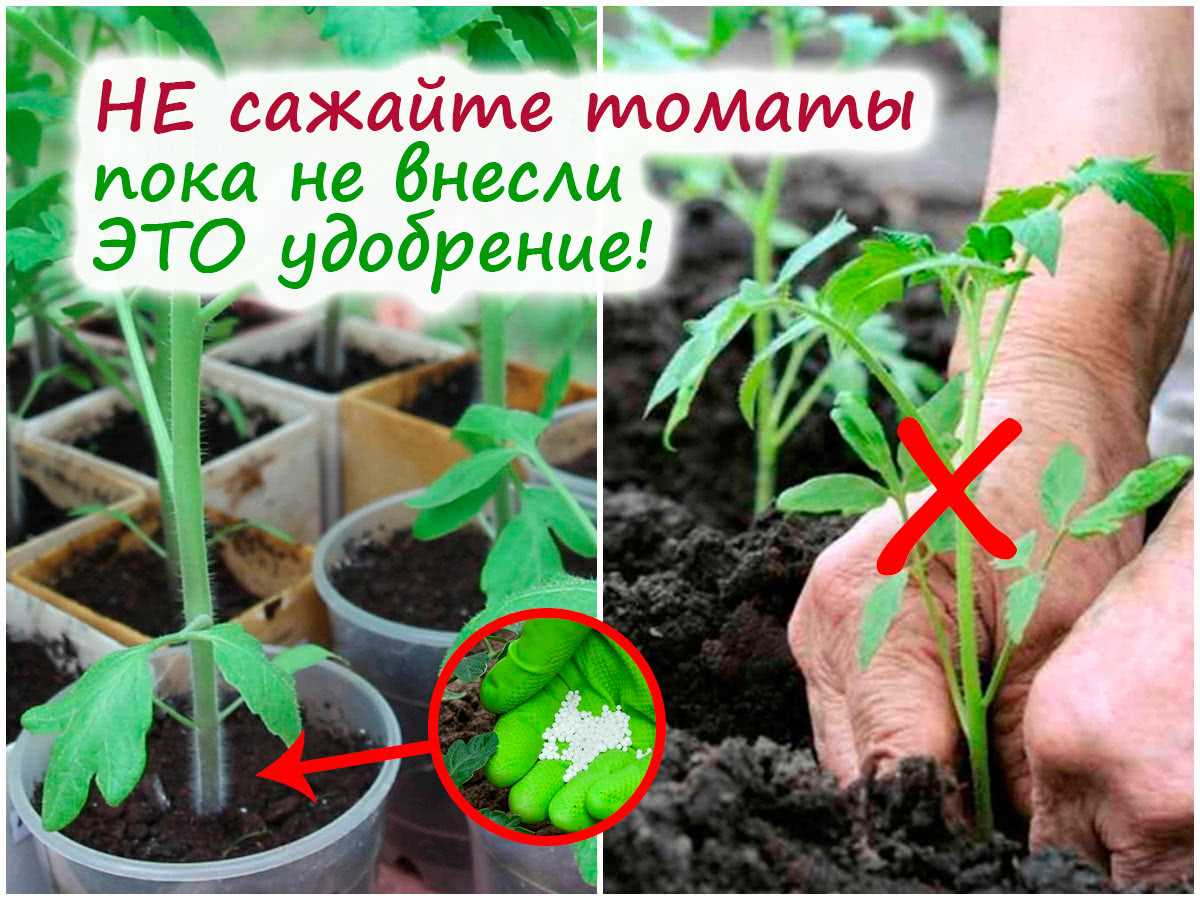
Почему обязательная подкормка томатов перед высадкой в грунт является важным этапом возделывания этой культуры? Ответ прост — подкормка обеспечивает необходимые питательные вещества для растений, способствуя их полноценному развитию и увеличению урожая.
Перед высадкой томатов в грунт особенно важно подготовить почву и обогатить ее питательными веществами. Подкормка помогает улучшить структуру почвы, повысить ее плодородие и защитить растения от недостатка необходимых элементов. Без подкормки томаты могут развиваться медленнее, иметь слабое корневое образование и меньший урожай.
Подкормку томатов рекомендуется проводить примерно за 2-3 недели до высадки растений в грунт. На этом этапе рекомендуется использовать органические удобрения, такие как перегной, компост или птичий помет. Они обогатят почву органическими веществами, улучшат ее структуру и способствуют усвоению питательных веществ растениями.
Однако, рекомендуется подбирать органические удобрения с учетом состава почвы и требований конкретного сорта томатов. Некоторые сорта предпочитают более кислую почву, в то время как другим лучше подходит слегка щелочная среда. Поэтому перед подкормкой томатов рекомендуется провести анализ почвы и соблюдать рекомендации по использованию конкретных удобрений.
Особенности подкормки томатов в открытом грунте
Почему подкормка томатов обязательна перед высадкой в грунт? Томаты являются требовательными растениями, которые нуждаются в обильном и правильном питании для успешного роста и формирования урожая. Подкормка томатов перед высадкой в грунт является неотъемлемой частью процесса выращивания и позволяет обеспечить растения всеми необходимыми питательными веществами.
Важно помнить, что основными элементами, которые нуждаются в подкормке томаты, являются азот, фосфор и калий. Азот способствует развитию зеленой массы растения и формированию крепких стеблей и листьев. Фосфор улучшает корневую систему и способствует развитию плодов, а калий укрепляет иммунитет растений и повышает их устойчивость к стрессовым условиям.
Подкормку томатов в открытом грунте можно проводить различными способами. Можно использовать органические удобрения, такие как перегной, компост или навоз, которые обогатят грунт не только основными элементами, но и микроэлементами, необходимыми для нормального развития растений. Также можно применять минеральные удобрения, которые быстро и эффективно доставляют питательные вещества до корневой системы томатов.
Без подкормки томаты могут развиваться медленно, иметь слабую иммунную систему и давать меньший урожай. Правильная и своевременная подкормка томатов перед высадкой в грунт – залог успешного роста и богатого урожая.
Подкормка томатов в теплице и на грунтовых грядках
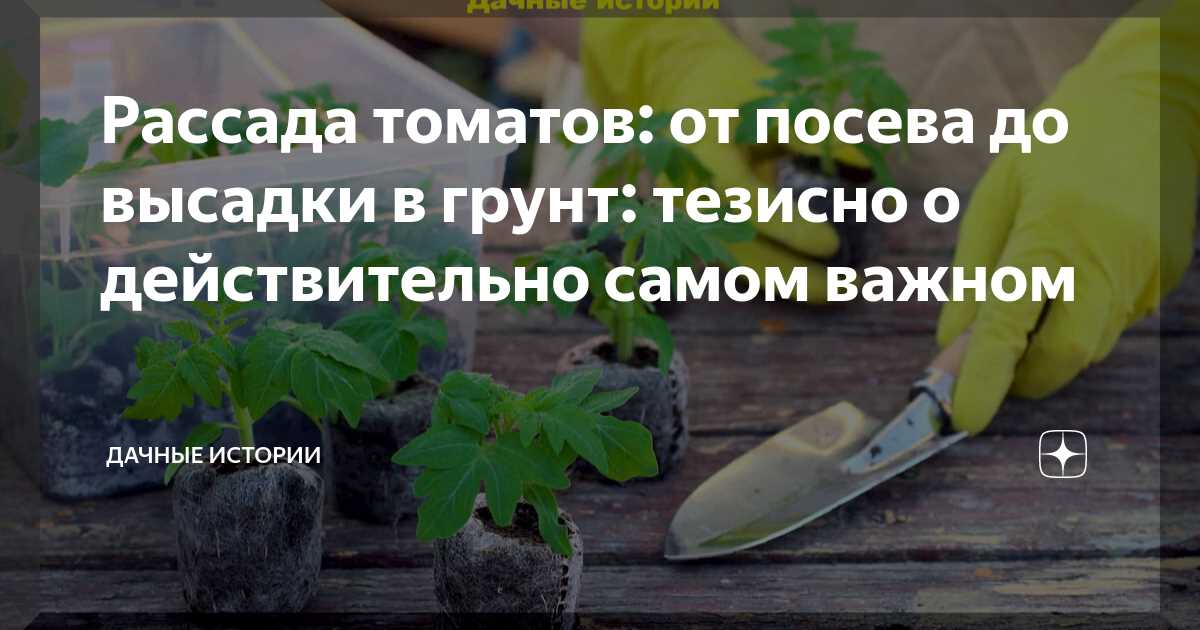
Подкормка томатов является обязательной процедурой, которая необходима для успешного роста и развития растений. Почему подкормка так важна?
Во-первых, томаты являются культурой, требовательной к питательным веществам. Они нуждаются в достаточном количестве макро- и микроэлементов для активного роста и формирования плодов. Без подкормки грунт может не содержать достаточного количества питательных веществ, что отразится на качестве и урожайности томатов.
Во-вторых, подкормка томатов перед высадкой в грунт позволяет создать оптимальные условия для развития корневой системы растений. Правильно подобранные удобрения способствуют формированию крепкого и здорового корня, что повышает устойчивость растений к болезням и вредителям.
Для подкормки томатов в теплице и на грунтовых грядках можно использовать органические и минеральные удобрения. Органические удобрения, такие как перегной, компост или органические удобрения в виде гранул, позволяют обогатить грунт не только питательными веществами, но и органическим веществом, улучшающим его структуру и водопроницаемость.
Минеральные удобрения, такие как азотные, фосфорные и калийные, обеспечивают растениями необходимые элементы для активного роста и развития. При выборе минеральных удобрений следует учитывать потребности томатов в питательных веществах и состав грунта, чтобы предотвратить переусложнение или недостаток определенных элементов.
Преимущества использования органических удобрений
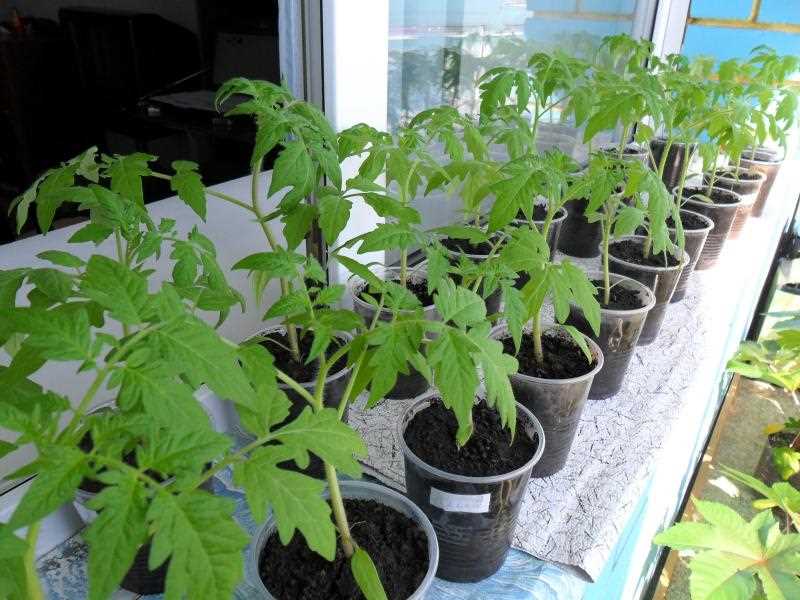
Органические удобрения являются неотъемлемой частью обязательной подкормки томатов перед высадкой в грунт. Почему именно органические удобрения так важны?
Во-первых, они безопасны для окружающей среды и здоровья человека. Органические удобрения производятся из натуральных материалов, таких как компост, перегной, мульча, и не содержат химических добавок или синтетических веществ. Это означает, что они не загрязняют почву и воду, не причиняют вреда растениям и животным, и не имеют негативного влияния на здоровье человека при употреблении продукции.
Во-вторых, органические удобрения богаты полезными микроэлементами и питательными веществами, необходимыми для нормального роста и развития растений. Они содержат органические вещества, которые способствуют улучшению структуры почвы, увеличению ее плодородия и водопроницаемости. Это позволяет томатам получать достаточное количество питания и влаги, что в свою очередь способствует их здоровому росту и формированию крупного и вкусного урожая.
Наконец, органические удобрения долговременно влияют на почву и растения. Они медленно высвобождают питательные вещества, обеспечивая постоянное питание томатов на протяжении всего сезона. Благодаря этому, растения получают не только достаточное количество питательных веществ, но и в нужном соотношении, что положительно сказывается на их здоровье и урожайности.
Вывод: использование органических удобрений при подкормке томатов перед высадкой в грунт позволяет обеспечить безопасный и эффективный рост растений, а также получить качественный и обильный урожай.
Правила безопасности при подкормке томатов
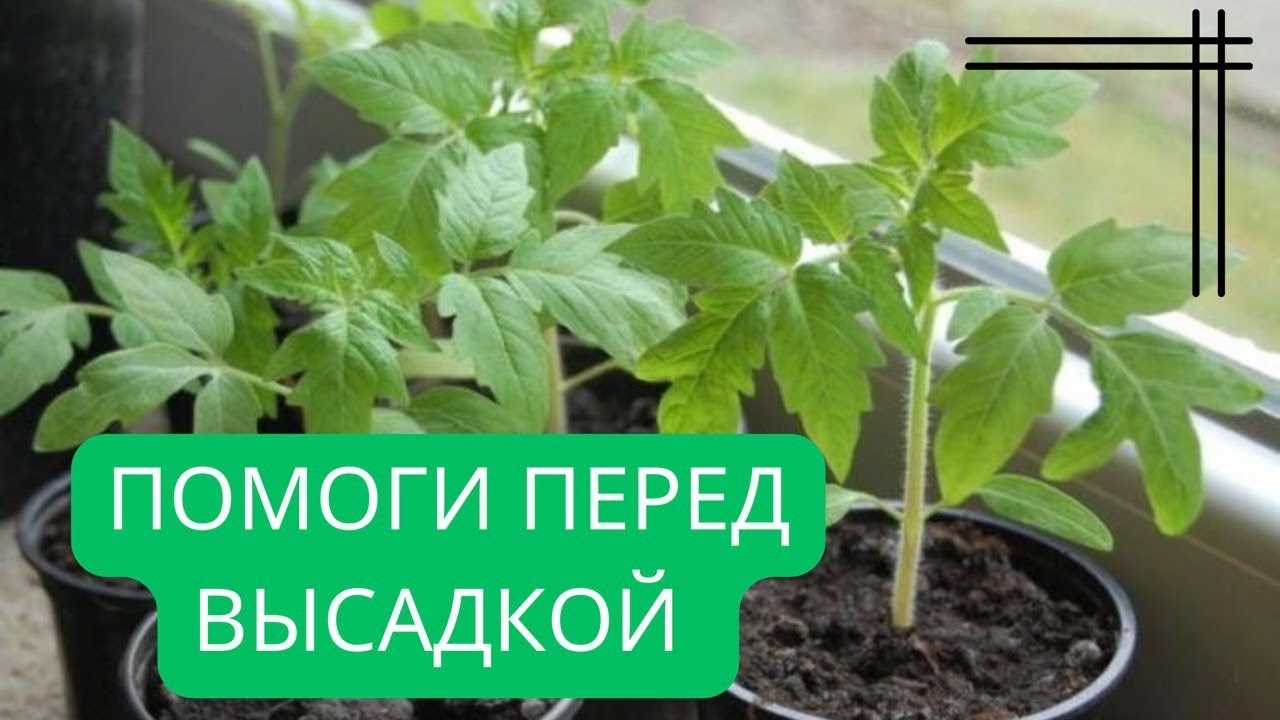
Подкормка томатов перед высадкой в грунт – обязательная процедура, которая способствует успешному росту и урожаю. Однако, несоблюдение правил безопасности при выполнении этой операции может привести к негативным последствиям.
Во-первых, необходимо избегать контакта подкормочных средств с кожей. Многие удобрения и препараты содержат химические вещества, которые могут вызвать раздражение и аллергические реакции. Поэтому рекомендуется надевать перчатки и защитную одежду при работе с подкормкой томатов.
Во-вторых, необходимо тщательно соблюдать дозировку подкормочных средств. Избыточное количество удобрений может привести к перегрузке почвы и переизбытку питательных веществ для растений. Это может привести к их перекормленности и развитию болезней. Поэтому рекомендуется строго следовать инструкции по применению подкормки и не превышать рекомендуемые дозировки.
В-третьих, необходимо учитывать особенности почвы и климатические условия в местности, где будет высаживаться томат. Подкормка томатов может быть эффективной только в том случае, если она адаптирована под конкретные условия. Например, если почва уже имеет достаточное количество питательных веществ, дополнительная подкормка может стать излишней.
В-четвертых, нельзя проводить подкормку томатов на сырой почве или во время дождя. Влага может размывать удобрения и смывать их из корневой зоны томатов. Поэтому рекомендуется проводить подкормку в сухую погоду и на хорошо осушенной почве.
Все эти меры безопасности помогут обеспечить успешный рост и развитие томатов после подкормки, а также защитят здоровье садовода от негативного воздействия химических веществ.
Выводы
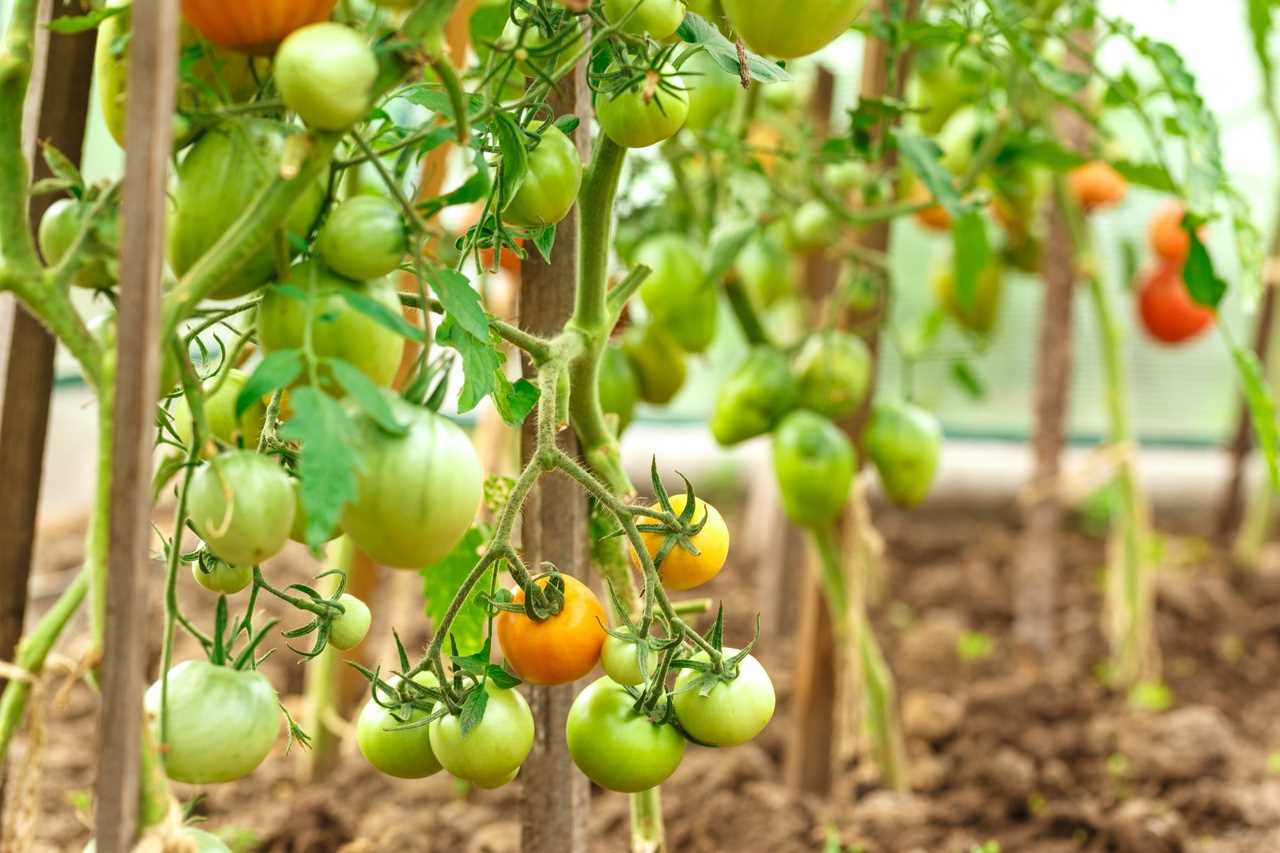
Обязательная подкормка томатов перед высадкой в грунт является ключевым фактором для успешного роста и урожая. Почему это так? Подкормка обеспечивает растения необходимыми питательными веществами, которых не всегда достаточно в почве. Без подкормки томаты могут страдать от недостатка питания и не смогут полноценно развиваться.
Подкормка перед высадкой в грунт проводится для того, чтобы обеспечить томатам оптимальные условия для роста и развития. Также это позволяет ускорить начало плодоношения и повысить урожайность. Если не проводить обязательную подкормку, то томаты могут быть маленькими, некачественными и иметь низкую урожайность.
Подкормка томатов перед высадкой в грунт является неотъемлемой частью агротехники выращивания данных растений. Почему именно перед высадкой? В этот момент растения активно начинают формировать корни, и важно обеспечить их питательными веществами в достаточном количестве. Подкормку можно проводить разными способами – органическими или минеральными удобрениями, в зависимости от состояния почвы и потребностей растений.
Таким образом, обязательная подкормка томатов перед высадкой в грунт – это необходимое условие для успешного роста и урожая. Без нее растения не получат достаточного питания и не смогут полноценно развиваться. Подкормка перед высадкой в грунт позволяет обеспечить томатам оптимальные условия для роста и развития, ускорить начало плодоношения и повысить урожайность.
Вопрос-ответ:
Какую подкормку рекомендуется использовать перед высадкой томатов в грунт?
Рекомендуется использовать органические удобрения, такие как перегной, компост или навоз, для подкормки томатов перед высадкой в грунт.
В каком количестве следует применять подкормку перед высадкой томатов в грунт?
Количество подкормки зависит от состояния почвы и растений. Обычно рекомендуется использовать примерно 1-2 кг органического удобрения на каждый метр квадратный почвы.
Какие преимущества имеет подкормка томатов перед высадкой в грунт?
Подкормка томатов перед высадкой в грунт позволяет обеспечить растения необходимыми питательными веществами, способствует их быстрому и здоровому росту, а также увеличивает урожайность.
Какие недостатки может иметь неправильная подкормка томатов перед высадкой в грунт?
Неправильная подкормка томатов перед высадкой в грунт может привести к перегрузке растений питательными веществами, что может вызвать их перенасыщение, ослабление иммунной системы и повышенную восприимчивость к болезням.
Какие существуют альтернативные методы подкормки томатов перед высадкой в грунт?
Кроме органической подкормки, можно использовать минеральные удобрения, такие как азот, фосфор и калий. Также существуют специальные комплексные удобрения, которые содержат все необходимые питательные вещества для растений.


